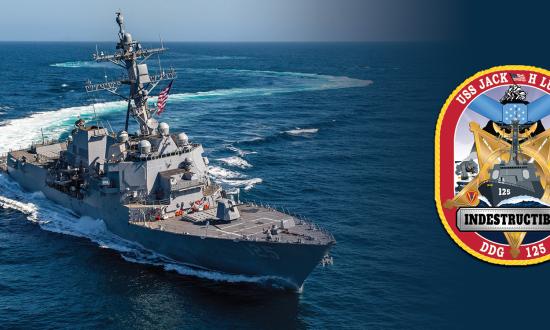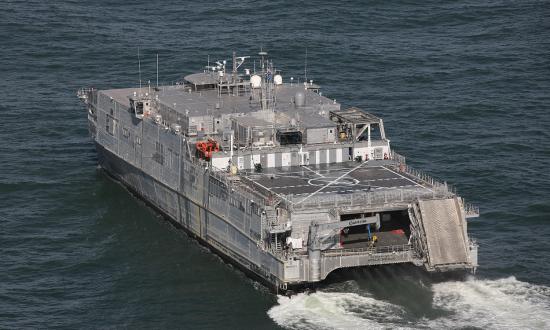The Navy is nearly set to start at-sea testing of an inertial sensor module (ISM), the key component of Northrop Grumman’s new WSN-12 Inertial Navigator System. Navy officials say it will offer order-of-magnitude improvements in navigation precision compared to previous inertial systems. It is scheduled for ship installation in 2025.
Company officials point out that ships and submarines rely heavily on GPS data for navigation and weapon guidance. When GPS is degraded or unavailable, assured position, navigation, and timing (A-PNT) can take its place. In the 1980s, Sperry Marine developed the WSN-7’s ring-laser gyroscope technology to generate A-PNT on Navy ships. The ring-laser system replaced older spinning mass gyroscopes long used for maritime navigation. Today’s WSN-12 replaces the ring-laser gyro with a fiber-optic one.
Northrop Grumman’s Naval and Oceanic Systems Group has delivered more than 500 WSN-7s to the Navy. The system is installed on Arleigh Burke–class destroyers, Ticonderoga-class cruisers, Nimitz-class aircraft carriers, and other U.S. Navy and allied ships. The WSN-7A variant is used on Los Angeles–, Seawolf-, and Virginia-class attack submarines.
This past June, the Navy awarded Northrop Grumman a full-rate production contract for the WSN-12 ISM. Following successful shipboard testing, the WSN-12 will be installed on the cruisers, destroyers, carriers, and attack subs.
Rudy Fernandez, Northrop Grumman’s director of Maritime Systems and Integration, says the WSN-12 is a ship and submarine’s “position keeper.” He explains, “The WSN-12 provides navigation data (attitude, velocity, and position) using an inertial measurement unit [IMU]. The IMU contains accelerometers and gyros that measure the vessel’s motion over the earth. Using the IMU measurements, the WSN-12 computes navigation solutions and distributes them to ship systems.”
Fernandez says the system is the same size as the WSN-7, but it provides “significantly improved accuracy, engineered for precision using the company’s fiber-optic gyro [FOG], which uses laser light to measure and convey precise information about the ship’s position.”
The company says the FOG technology was introduced in the 2000s for use with aircraft and land vehicles. Using additional fiber enables the FOG approach to “scale up” for greater accuracy.
The WSN-12’s navigation data will be integrated with the Navy’s Northrop Grumman Electronic Chart Display and Information System (ECDIS), which originally was developed for commercial shipping. ECDIS is a component of the company’s Vessel Management System (See Naval Systems, February 2023).
The Navy awarded the company a $13 million contract in September 2022 for upgrades to ECDIS, which processes and displays multiple chart formats to aid in route planning and monitoring navigation hazards.
The Navy long has recognized the importance of improving the precision and accuracy of navigation along with automating and distributing navigation data to ship systems through the integration of navigation systems with automated bridge systems.
An early system, the Navigation Sensor System Interface (NAVSSI) was fielded to about 70 ships in the 1990s. The NAVSSI consisted of a real-time subsystem that processed navigation data from radars, GPS, speed logs, and inertial navigation systems and distributed the data to ship systems.
The WSN-12 traces its roots to 1993, when Sperry Marine was awarded a contract for the Mk 49 Ring Laser Gyrocompass Ship Navigation System (SINS), which eventually became the WSN-7. In 1996, Sperry was acquired by Litton Guidance and Controls, which then was acquired by Northrop Grumman in 2001.
Editor’s Note: Mr. Walsh has written Naval Systems since 1997. His work has been an important contribution to the open forum for 25 years, informing readers not only of the systems, but also how they came to be. Saying the Naval Institute is profoundly grateful for his efforts falls far short of the mark, as words sometimes do.







